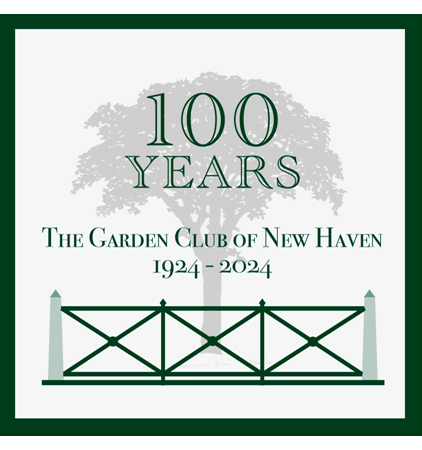Phelps Triangle Park
For decades, Phelps Triangle Park has been a favorite neighborhood relaxation spot in the heart of New Haven.
The combined mature trees, lush undergrowth and symmetry of the planting scheme create an atmosphere of serenity in the park, making it an appealing green oasis among the surrounding buildings and a popular venue for lunch meetings and casual visits.
The Triangle came into existence in 1824 when Temple Street was extended to Whitney Avenue, creating a detached piece of property at the intersection with Trumbull Street. This triangle of land was donated to the city in 1850 by the heirs of the Hillhouse Estate. The property was renamed to Phelps Triangle Park in 1943 in honor of the prominent Yale Literature Professor William Lyon Phelps, whose house faced the triangle.
In 1949 the triangle was drab and undeveloped, and the Garden Club of New Haven (GCNH) offered to transform it into a community space and to maintain it as well. On Arbor Day, April 25th, 1952 the GCNH launched the project by planting seven elms, eleven yews, and three white dogwoods, with a central lawn and flower bed full of bulbs and annual flowers.
By 1969 Dutch Elm Disease had killed off the elms and the park was in a deteriorated state.
The GCNH funded a landscape plan, purchased all the plantings and design elements and oversaw the transformation of the space into a renewed pocket park for the neighborhood. The lawn was eliminated, the center was paved with brick and the plants were selected for pollution resistance.
By 2008, the triangle again required a major renovation. While the oak trees were in good condition, 90% of the shrubs and ground covers had to be replaced due to various infestations. Plans were solicited from three landscape architects, and the proposal from architect Amy Sampson was selected due to its optimal approach to park use and maintenance. The renovation was funded by the Vietor family and Hortense Wilson.
Club members spend about 200 hours annually on weeding, pruning, mulching, dead–heading, raking, litter pickup, fertilization, and planting as needed. Members also devote a day each autumn to installing burlap along the fence to protect the plants from winter damage. The burlap is removed in early spring when the annual club gardening cycle begins again.
